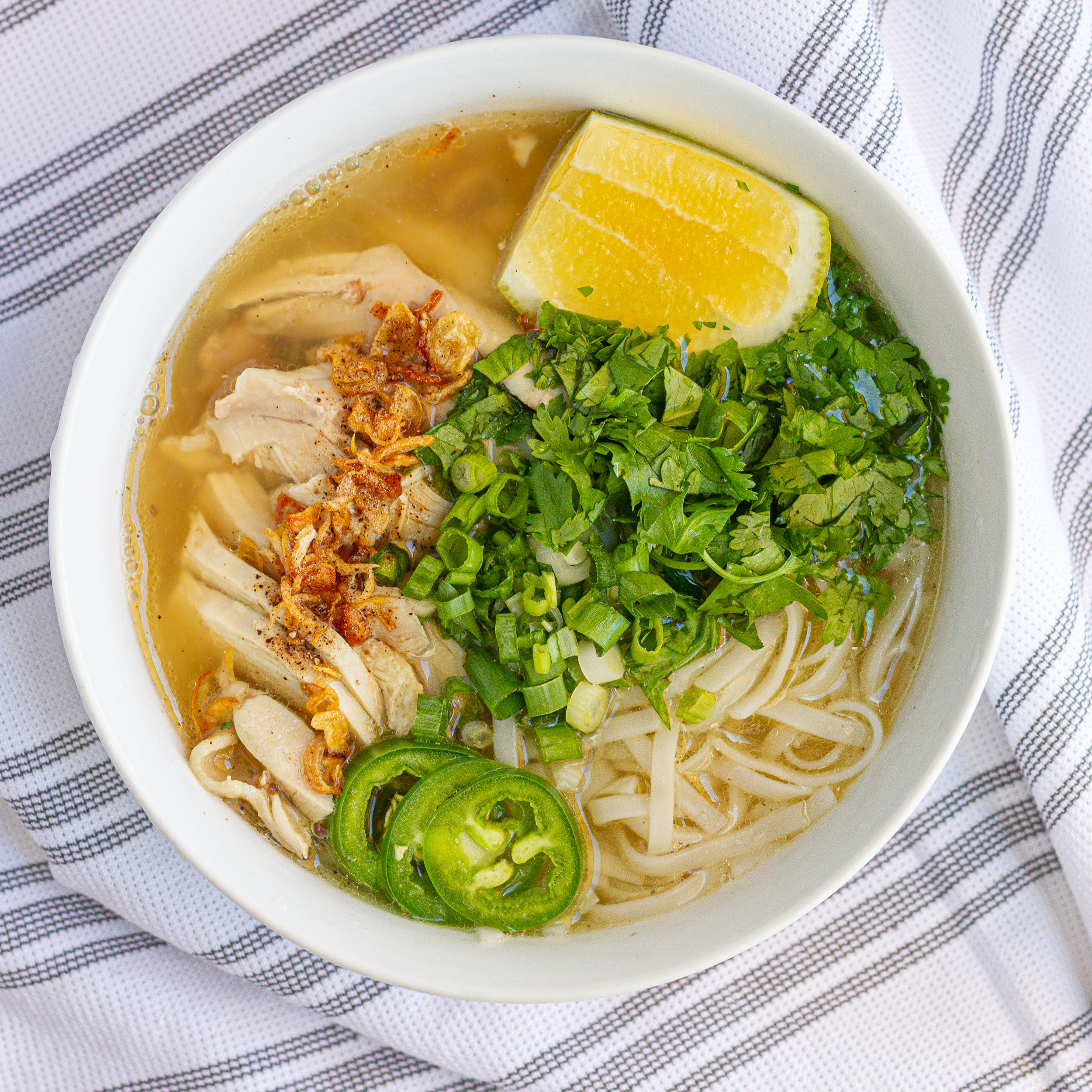Pho Ga (Vietnamese Chicken Noodle Soup) is one of the classic dishes of Northern Vietnamese cuisine. Light yet flavorful, simple yet sophisticated, this fragrant noodle soup can warm your heart and soul.
I will share with you how to cook authentic Pho Ga Hanoi with natural, real ingredients, as well as how to serve and eat it like a Vietnamese. Instructions for traditional stovetop method and pressure cooker method are included.
What is Pho Ga (Vietnamese Chicken Noodle Soup)
“Pho” means rice noodles and “ga” means chicken. “Pho Ga” simply means chicken rice noodle soup. A bowl of pho ga consists of soft slippery pho noodles, sliced or shredded chicken meat and light and fragrant broth.
Pho ga is believed to originate in Hanoi, and it is a cousin of pho bo (beef pho). Despite being not as bold as beef pho, chicken pho has its own charms.
Pho ga smells so good that you suddenly realize how hungry you are. It is still light enough that you will not feel overloaded or guilty even after savoring a huge bowl.
What Makes a Delicious Bowl of Pho Ga
Before we get to how to cook it, I thought it is important to point out characteristics of a delicious bowl of chicken pho.
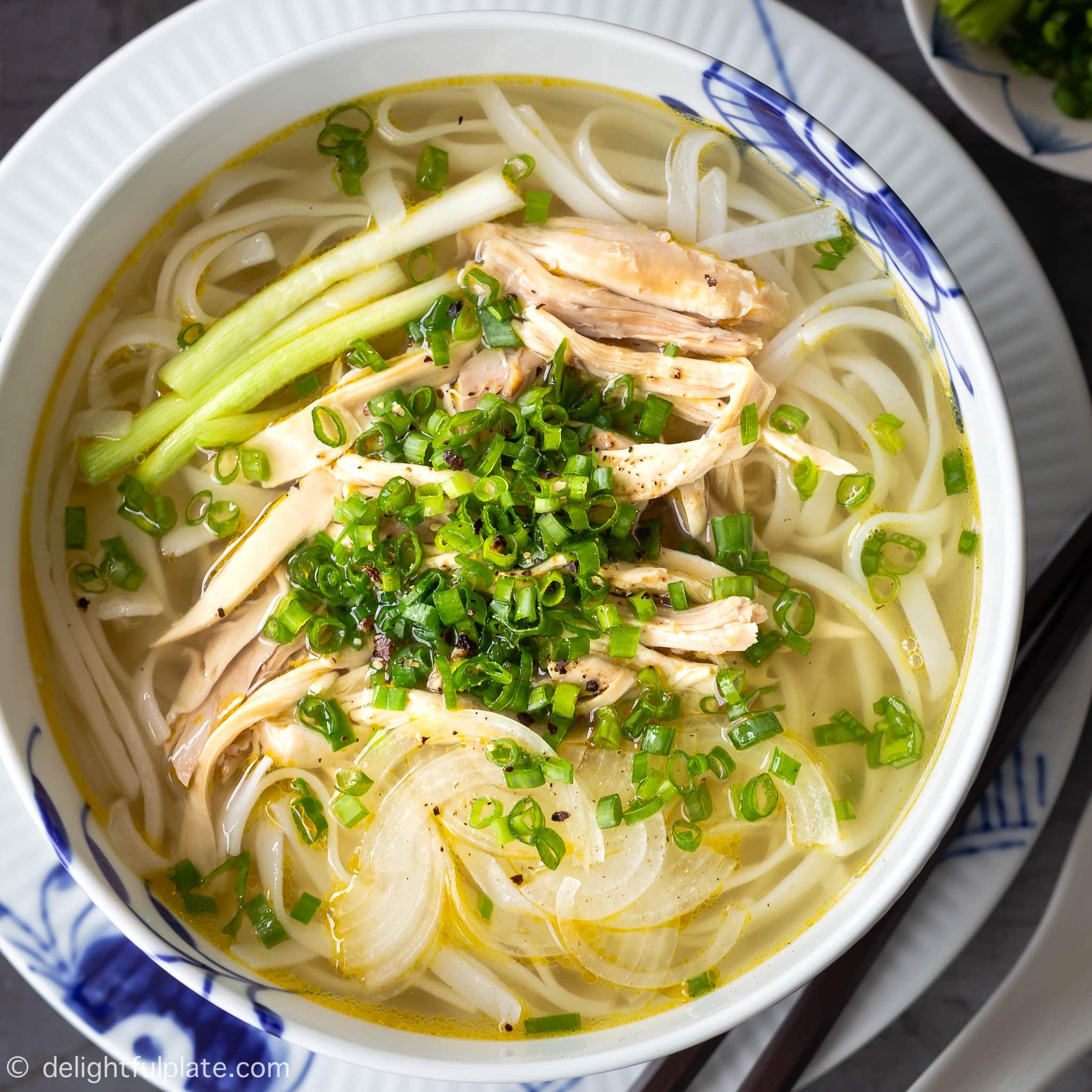
First of all, the broth must be clear, light, flavorful with a golden color and fragrance from ginger and spices. The sweetness of the broth should come from gently simmering chicken bones. The more bones you use, the stronger the broth. You should not need to add sugar or MSG to season the broth. Besides, the fragrance from pho spices shouldn’t overwhelm the chicken flavors.
The chicken meat should be tender, moist and juicy. It should still retain the right amount of firmness – a sign that the meat is just cooked through. Overcooked, fall-off-the-bone and flavorless chicken meat has no place in a bowl of authentic pho ga.
Ingredients
To cook pho ga, you will need a whole chicken or a combination of chicken thighs, breasts and chicken parts with bones (such as chicken backs and necks).

You will also need shallots (or onions), ginger and spices for the broth. I find that pho broth in Vietnam has a more pronounced ginger fragrance than Americanized pho. So be generous with the amount of ginger.
If you find your pho broth too bland, chances are you either did not use enough chicken bones, did not simmer long enough or added too much water. I personally think there is no need to add rock sugar which artificially sweetens the broth, but I’ll leave it up to your taste to decide.
I also don’t like adding an apple to the broth like a lot of recipes do. It makes the broth taste totally weird and not like chicken pho broth at all, in my opinion.
Since chicken flavor is so light and delicate, I find that it is better to use shallots than onions. Onions are more pungent and sulfuric than shallots. If you cook pho ga on your stovetop, it’s fine to use onions if you don’t have shallots.
However, if you want to cook it in your pressure cooker, please use shallots. From my experiments with my pressure cooker, onions make the chicken broth taste somewhat unpleasant with its strong sulfuric fragrance.
My favorite spice blend for chicken pho broth consists of cassia bark (or cinnamon stick), star anise, coriander seed, and black cardamom pod. Black cardamom pod adds a lovely sweet note, but you can skip it if you cannot find it. If the bunch of cilantro you have on hand has cilantro roots, wash a few of them and simmer with the broth instead of using coriander seeds.
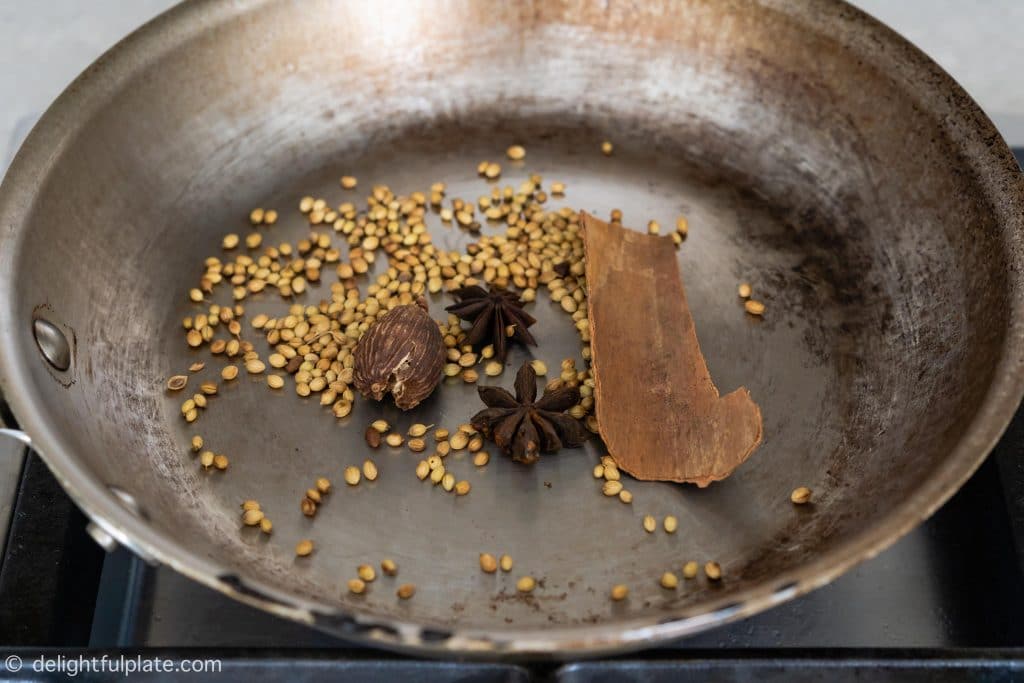
I also tried cloves and found that with cloves, it’s important to use a very small amount, like 3-4 cloves per one whole chicken and don’t simmer cloves in the broth too long. I only add cloves during the last 20-30 minutes. The spice blend with cloves is actually closer to the taste of pho ga Hanoi than with coriander seeds. It includes cinnamon, star anises, black cardamom pod and cloves.
I also tried adding fennel seeds and they gave the chicken broth some kind of a herbal taste I wasn’t fond of, but feel free to play around with the spices.
I also flavor the broth with some fish sauce. Make sure you add fish sauce at the very end. Don’t add fish sauce in the simmering stage because it can result in some sourness in the broth.
Cooking Notes for Pho Ga
Whether you decide to cook pho ga on the stovetop or in a pressure cooker, I strongly recommend parboiling the chicken first to get rid of impurities and unpleasant chicken smell.
One more extra step you can do is to toast the spices and dry roast the ginger and shallots to give the broth more depths. However, this step is not as critical as blanching the chicken.
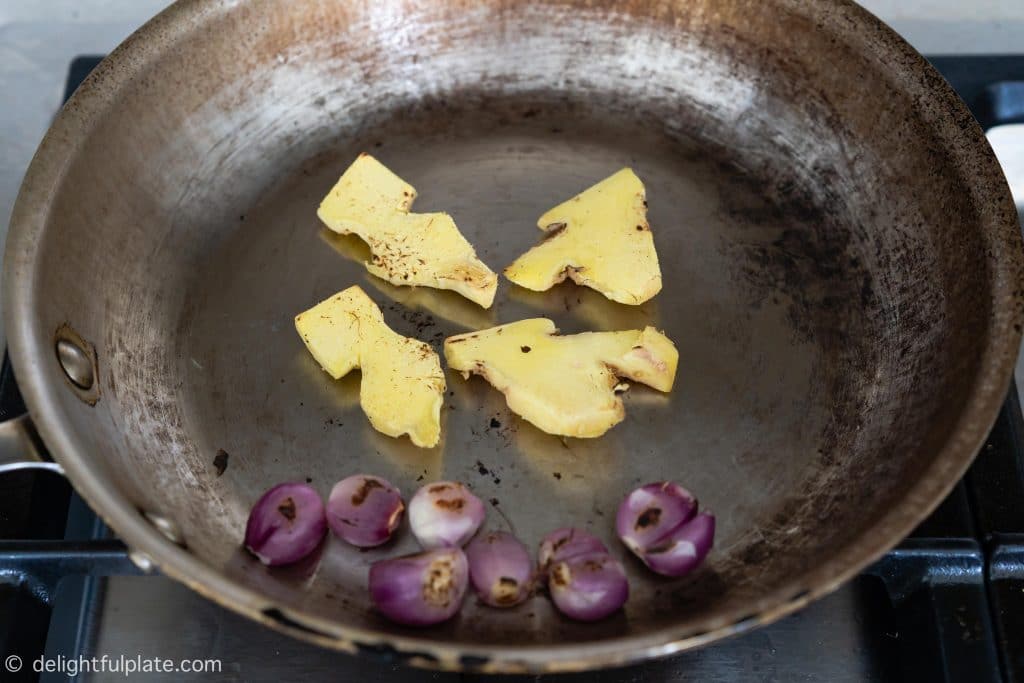
Stovetop Method
I personally think stovetop is the best method to cook any kind of pho noodle soups. Slow and gentle simmering is what makes the magic happen.
First, you should simmer the chicken with ginger, shallots, and spices until the chicken is just cooked through. Do not overcook or the meat will not have a good texture.
Then separate the chicken meat from chicken bones and add the bones back to the broth. Continue to simmer for, ideally, 45-60 minutes at least or until the flavors are concentrated to your likings. If you have time, you can even simmer up to 90 minutes.
Pressure Cooker Method
I understand that the point of using a pressure cooker such as an Instant Pot is to cut down on cooking time, but we shouldn’t sacrifice the taste too much. Therefore, I strongly recommend doing pressure cooking in two stages.
The first stage needs only about 3 minutes of pressure cooking to get the chicken fully cooked. Then we separate the meat from the bones and continue to pressure cook the broth with just the bones. If we don’t stop in the middle to get the chicken meat out, it will be overcooked.
To be honest, for me, in order for the pressure cooker chicken pho to turn out as good as stovetop chicken pho, the amount of time I save is not very significant.
How to Serve and Eat Pho Ga Hanoi
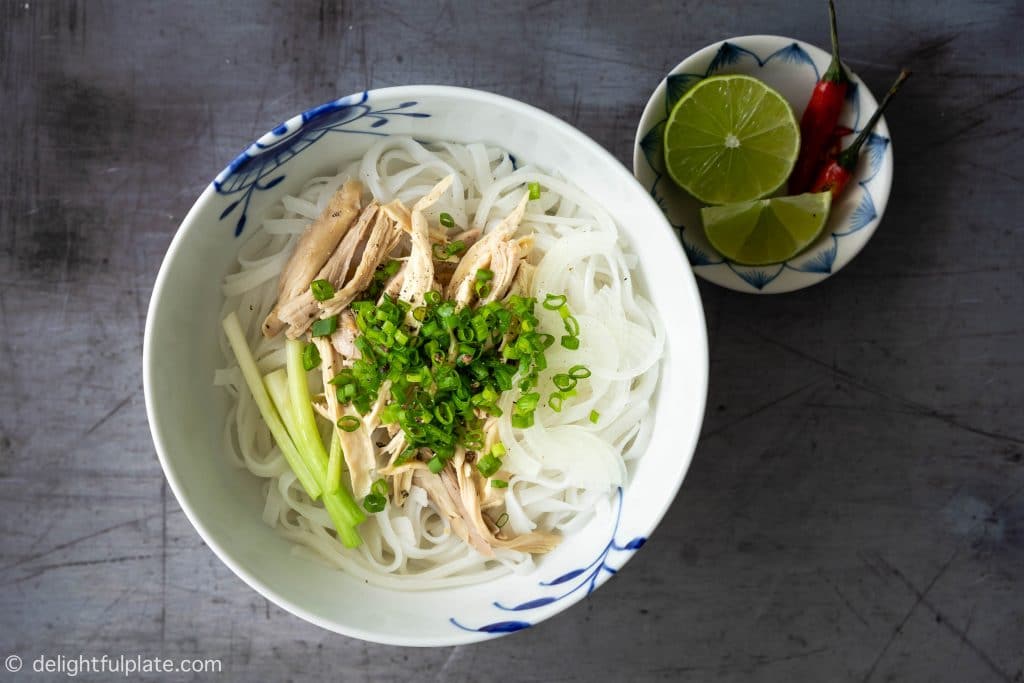
People in Hanoi (and Northerners in general) serve pho ga plain and simple. We top the noodles with chicken meat, very thin slices of onions (I mean paper-thin), a good sprinkle of black pepper, scallions and sometimes cilantro or julienned kaffir lime leaves.
You may also add a few slices of birds-eye chili if you want some heat or add a squeeze of lime to your bowl when eating at the table.
For scallions, separate the white and green parts. Thinly slice the green parts and add them to the bowl. With the white parts, quickly poach them in the boiling broth before adding them to your bowl. Finally, ladle the hot broth over everything and serve immediately.
If you want to serve it in Southern style, you will also need some bean sprouts and more fresh herbs (like Thai basil – húng quế and sawtooth leaves – ngò gai) on the side. Detailed measurements and instructions are in the recipe card below as usual.
_____________________________________________________________________________________________________
Don’t hesitate to pack your luggage, come and discover the amazing Vietnam cuisine. For more information please visit our family website:
For Vietnam online visa Govietnamvisa.com
For Vietnam local tours: Govietnamtourist.com
